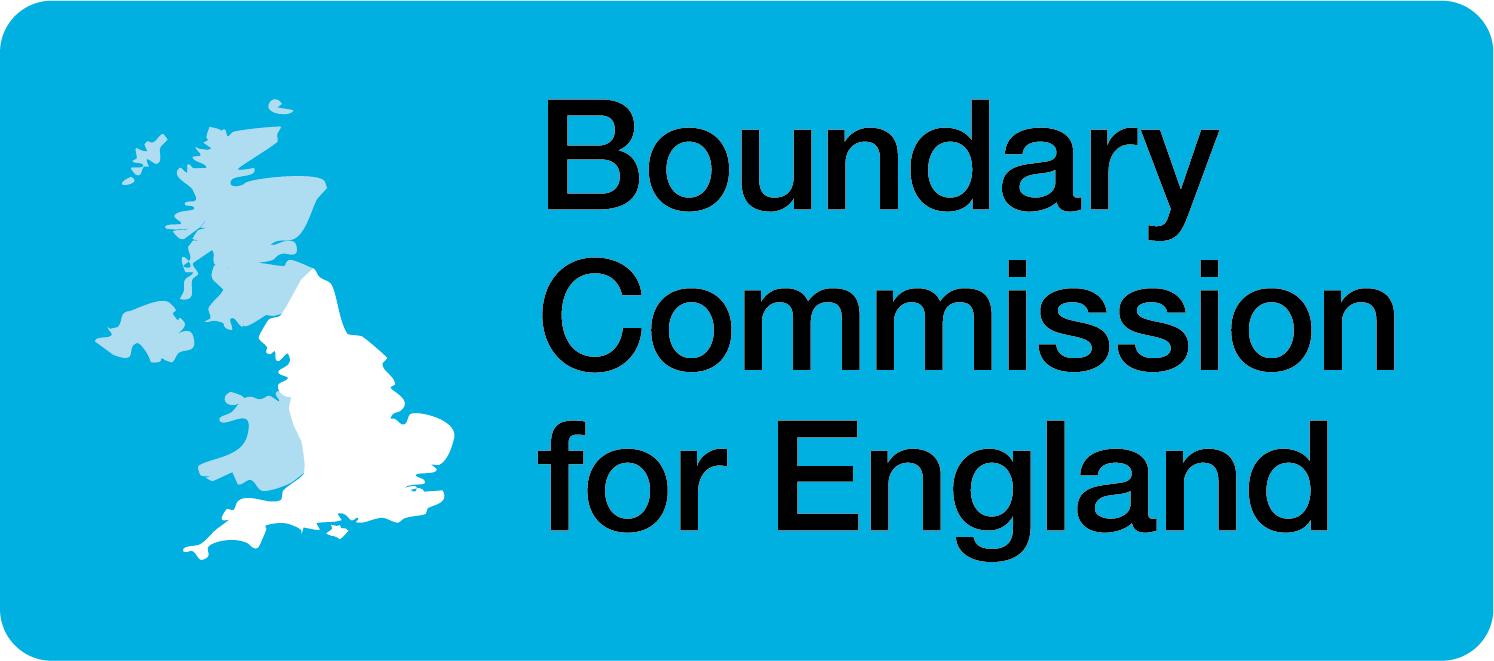Summary
Who we are and what we do
The Boundary Commission for England (BCE) is an independent and impartial non-departmental public body, which is responsible for reviewing Parliamentary constituency boundaries in England.
The 2023 Review
We have the task of periodically reviewing the boundaries of all the Parliamentary constituencies in England. We are currently conducting a review on the basis of legislative rules most recently updated by Parliament in 2020. Those rules tell us that we must make recommendations for new Parliamentary constituency boundaries by 1 July 2023. While retaining the overall number of constituencies across the UK at 650, the rules apply a distribution formula that results in an increase in the number of constituencies in England (from 533 to 543). The rules also require that every recommended constituency across the UK – apart from five specified exceptions (two of them in England) – must have an electorate that is no smaller than 69,724 and no larger than 77,062.
Initial proposals
We published our initial proposals for the new Parliamentary constituency boundaries in England on 8 June 2021. Information about the proposed constituencies is now available on our website at www.boundarycommissionforengland.independent.gov.uk
What is changing in the Eastern region?
The Eastern region has been allocated 61 constituencies – an increase of three from the current number.
Our proposals leave one of the 58 existing constituencies wholly unchanged, and ten unchanged except to realign constituency boundaries with new or prospective local government ward boundaries.
As it has not always been possible to allocate whole numbers of constituencies to individual counties, we have grouped some county council and unitary authority areas into sub-regions. The number of constituencies allocated to each sub-region is determined by the combined electorate of the local authorities they contain.
Consequently, it has been necessary to propose some constituencies that cross county or unitary authority boundaries, although we have sought to keep such crossings to a minimum.
| Sub-region | Existing allocation | Proposed allocation |
|---|---|---|
| Bedfordshire1 and Hertfordshire | 17 | 18 |
| Cambridgeshire2 | 7 | 8 |
| Essex3 and Suffolk | 25 | 26 |
| Norfolk | 9 | 9 |
In Cambridgeshire and Norfolk it has been possible to propose a pattern of constituencies that are wholly contained within the boundaries of each county.
In the Bedfordshire and Hertfordshire, and Essex and Suffolk sub-regions, it has been necessary to propose constituencies that cross county boundaries. We have proposed one constituency that contains electors from both Bedfordshire and Hertfordshire, which includes three wards from the Central Bedfordshire unitary authority in a constituency with the town of Hitchin in Hertfordshire. We have also proposed one constituency that contains electors from Essex and Suffolk, which includes a number of wards from the Braintree district, including the town of Halstead, with a number of wards from the West Suffolk district, including the town of Haverhill.
How to have your say
We are consulting on our initial proposals for an eight-week period, from 8 June 2021 to 2 August 2021. We encourage everyone to use this opportunity to help us shape the new constituencies – the more responses we receive, the more informed our decisions will be when considering whether to revise our proposals. Our consultation portal at www.bcereviews.org.uk has more information about our proposals and how to give us your views on them. You can also follow us on Twitter @BCEReviews or at facebook.com/BCEReviews.
Back to top1 Comprising the three unitary authorities of Bedford, Central Bedfordshire and Luton, hereafter together referred to as Bedfordshire.
2 Comprising the county of Cambridgeshire and the unitary authority of Peterborough, hereafter together referred to as Cambridgeshire.
3 Comprising the county of Essex, and the unitary authorities of Southend-on-Sea and Thurrock, hereafter together referred to as Essex.
